Every autumn, there are two wonderful events in Dublin. The first, in September is called “Culture Night” which is pretty self-explanatory but covers all the arts. The second event is called “Open House”. It aims to interest and engage and to give people direct access to architecture, from old medieval and Georgian buildings, to the latest bits of high modernism.
In fact, I’d highly recommend anyone thinking of visiting Dublin to come around this time of year (from September-early October, or even early November) rather than our over-crowded and climatically-suspect “high summers” because, really, autumn is when the city is most culturally “buzzing”, with Culture Night, the Theatre Festival, the more affordable and excellent Fringe Festival, and Open House, the wonderful Visit (Studio) programme and more.
Anyway, each year the organizers of the Open House event publish a programme of different walks, talks, lectures, visits and events, both in hard copy form and online on their website. After careful perusal of same, this year just gone, myself and a friend decided that a walk around Pearse Street and its immediate area would be just the ticket.
Pearse Street is not the first area that jumps to mind when one considers the architectural glories of Dublin. The street itself -named after the 1916 patriot Patrick Pearse- is one of the main arteries into the city centre, and four lanes of busy traffic do not make for an especially restful urban experience. Nor are the flanking buildings, with a a few worthy exceptions, renowned for their beauty. But that is what made our walk so intriguing. It’s always good to been shown things you don’t know about, or to be inviited to consider things in a light you hadn’t considered before. The other draw was our guide, the excellent Lisa Cassidy, a qualified architect but someone who concentrates more these days on theory and history, including authoring a wonderful blog, one of my favourite blogs anywhere on the great world wide interweb, called “Built Dublin” which I highly, highly recommend to anyone interested in architecture and design.
Our walk started looking at a lot of the public housing projects in the area, especially from the 1930s through to the 1960s, and particularly those designed by city housing architect George Herbert Simms, like these below.
exteriors, above and below.
Inner communal space. Note balcony terraces, intended to maintain some sense of community. Many of these residents would formerly have been housed in “the tenements” – old Georgian houses, previously of magnificent proportions but then fallen on hard times, savagely sub-divided, over-crowded and often with poor sanitation.
Here below is another public housing project, also by Simms, from around the same period.
Note the block names and numbers, all in the old irish or “old gaelic typographic style, synonymous with the early Irish post independence period, the “Free State” period! There is a certain nostalgia to this for Irish people. Even in my childhood, half the State correspondence, stationary and street furniture (Post Boxes and the like) were still scripted in a similar style font.
In the case of this building, again to keep a sense of community and mixed use, Dublin city council and Simms also made the excellent decision to include shop spaces inset at ground level. Note the shop and business names. Curiously, these names, those of businesses, eschew the Gaelic style. Instead they appear in a no-nonsense, yet still deco-stylish text.
The main entrance make look a little grim, or institutional. It may even look a little totalitarian. But look below, these deco flourishes at roof level more than compensate. ..maybe. Either way, they are great.
Next Lisa marched us back down Pearse St, pausing briefly on the way to point out this nice little traditional hardware store.
She also pointed out this old Dublin pub, and how, even on a busy street, how attractive planting can soften and humanise an urban street-scape.
Personally, I also liked this column, with its nice mosaic of tiles.
Next we continued down to Pearse Street public library. We didn’t disturb the readers. The main feature Lisa wanted to draw our attention to here was this wonderful sculpture, inset into the floor of the lobby by artist Rachel Joynt.
I’d agree with Lisa, who was very enthusiastic about this piece. It can’t have been an easy brief because the area and the art piece are walked on and walked across all the time. Nonetheless, the artist has hinted at the idea of nuggets or cells of knowledge, like beehive cells. (irish monks, who were famously scholastic, used to build in, live in, study and pray in beehive cells”) The piece, subtly and elliptically, is full of such ideas. Look at the little pieces of text, tiny letters, frozen in the coloured glass.
Down on Pearse Street Bridge, we had a fresh look at the familiar Alto Vetro building, a slim but soaring apartment block from Dublins recent boom times.
Finally, another stop on our tour was a well loved and genuine art deco classic, the lovely Archers garage building.
well I say “genuine”. There is no disputing the quality of this building or the quality of its design. But infuriatingly, despite the fact the building was clearly the subject of protection and preservation orders, the owner decided he somehow had the right to knock it down. This he decided to do. In previous times, the bad old days, he would have got away with it too. (We in Ireland have a shocking track record protecting our wonderful architectural heritage, many superb buildings have been lost forever) Times thank God have changed, at last. In this case the owner was forced to build, entirely at his own expense, and working at the instructions of experts, an exact replica of the original.
It is not 100% perfect, but it is very close. It also sends out a clear message, long overdue, to other people who think they can just knocked down classic and historic buildings. This is progress. At last we in Ireland are looking after our buildings.
And events like “Open House” also make a huge difference; they draw people into architecture, its language and ideas and themes, and help to educate us all.







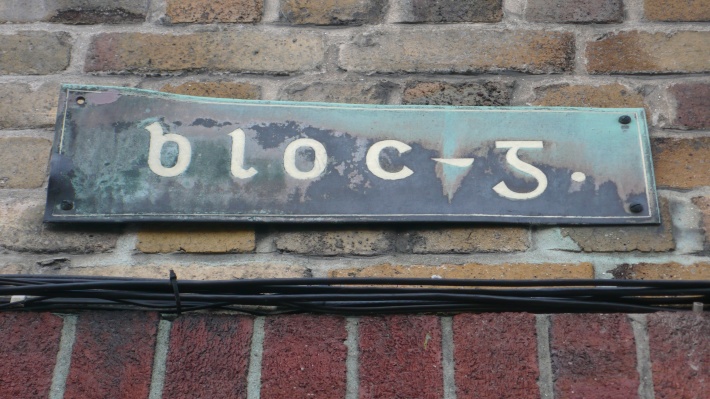

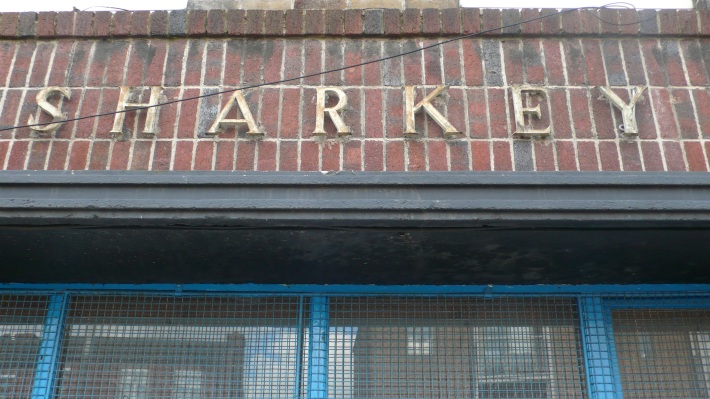
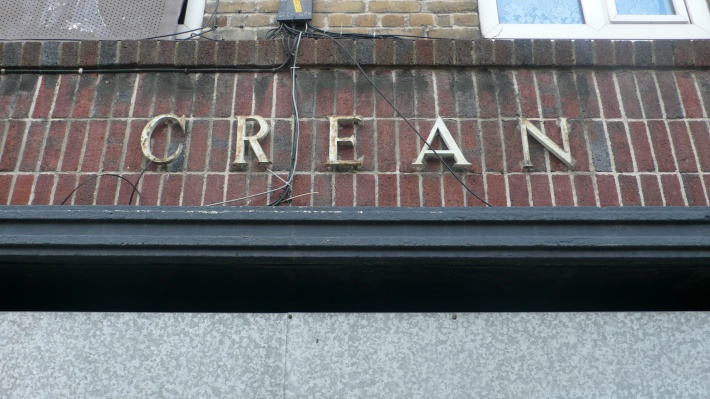








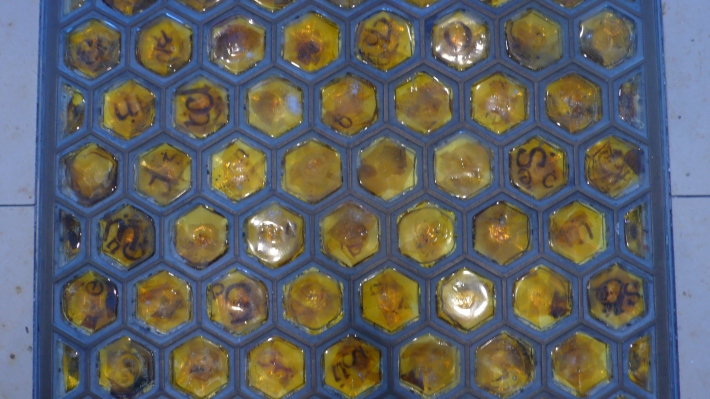
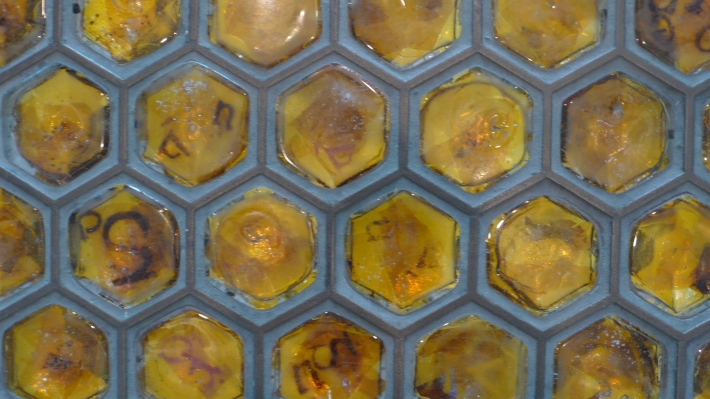



Living in the area for two years I wish now I’d paid more attention; the hardware store sure is a classic, interior-wise as well. No modernisation there.
LikeLike
Hi Roy, yes, agree with you, II’d pretty much neglected the area myself too. Certainly knew very little about the local architecture. So it was great to have someone like Lisa to walk us & talk us through it. Really enjoyed her take on things, she has a very nice, very people-centred type of sensibility, (if that makes sense?)
Thanks for taking the time to comment.
Agree with you about the hardware store too, it’s great! 🙂
LikeLike
I love the plantings and old school mosaic and glass tiles 🙂
LikeLike
Agreed. It is a pretty hard core street, with all the traffic lanes and cars rushing by. We were lucky, our tour was a sunday, when things are a little more sane, and also on a beautiful, blue-skied afternoon too.
But you’re dead right, the plantings and of course little details like those lovely old tiles do so much to help soften and humanise the place. There is still a lot of public housing in the area and a lot of kids growing up around there.
We could do a lot to make our city nicer. It’s frustrating. On the other hand we are learning, albeit very (very) slowly – all the time.
LikeLike
Arran, What a treat – Simms social housing, Archers Garage, tales of conservation enforcement, Joynt sculptures, 20th century mosaics, and sunshine – these are a few of my favourite things. You have cheered me up no end. Emx
LikeLike
That’s great Em, delighted to have cheered you up, (not too blue i hope) & to have helped the blister smile. Tell me, does my beloved niece appreciate the pictures? Have learnt recently I do have few occasional young readers, Jane’s son Oscar for example, who was reportedly VERY disappointed about my Natural History Museum piece, as I had criminally neglected to include any elephants. Can’t blame hm really.
LikeLike
Fascinating blog & article, Arran, thank you—the public housing samples in the beginning of the post reminded me of many, many buildings in Hamburg where I grew up (called “the red city” because of its many red brick buildings—a rather spectacular example is the Chile house: http://bit.ly/Yb3eA3 down by the harbour). So interesting historically and architecturally. Cheers from Berlin!
LikeLike
Yes, Germany of course has an incredible legacy of 20th century architecture, both pre- & post war. We would not have much of that scale or quality here. Thank you for the interesting picture link to the Chilehaus building. Not surprised it made such an impression. It is extraordinary. Just read your excellent piece on the Frankfurt book fair and left a comment there, super piece. Many thanks for your visit and comments, they are very much appreciated.
LikeLike
Smashing post Arran. Enjoyed it very much. There is a lot of social housing very similar to this in London. It is definitely of it’s time.
LikeLike
Hi, delighted you enjoyed it, thanks. yes I agree, indeed such developments are- in London and Dublin- very much of their time, in both good and in bad ways. I’ve always been very hard on Dublin City Council, and their record on everything from parks and public spaces (good parks but little of other types of urban space, when the city is crying out for them. Also their record on transport (not nearly enough cycle lanes in Dublin for example) and most of all, on architecture, both preservation and on social housing. Public housing flats are generally simply not big enough for families, in my opinion, nor with enough amenities, especially for young people, which is obviously crucial. But Lisa’s excellent talk made me consider whether I hadn’t sometimes been a little bit too harsh, at times. Obviously designers like Simms did not have an infinite budget. There is clear evidence he was at least thinking about community, and certainly many architects today consider he actually did a pretty good job of it.
LikeLike
Great pictures and really interesting post Arran – I enjoyed that. Have always vaguely been aware of these buildings so nice to see them properly.
LikeLike
Ah, Tig, really pleased to see you back. Delighted and chuffed you enjoyed it. Yes, it was interesting for me to learn a bit about the area, the projects and particularly on Herbert Simms, (I’m sure you already knew about hum, perhaps through Sam & Laura) As you know, he enjoys quite a high reputation, among both practitioners and theorists, who seem to really rate his social housing design work for DCC especially. I’ve been pretty scathing about DCC in the past (see above) – sometimes with good reason. Buts its important to get a sense of balance. Always good to have my preconceptions challenged,
LikeLike
Arran, really enjoyed this post, especially as I live close to the area. Hadn’t noticed the typography on the housing block names. Will look out for them now.
LikeLike
Yes, the typography is great, a real nostalgia blast in a way. I love the old shop and business names too. And the contrast between the two styles.
LikeLike
Hi Arran, I loved your piece on local authority housing in Pearse Street, it’s hard to believe that DCC was more civil minded and forward thinking some 60-70 years ago. I have the privilage in living in local authority housing in James’ Street-Mary Aikenhead House-which actually has it’s own air-raid shelters-how’s that for looking after the local community! I don’t know if Mary Aikenhead was built by your Mr. Simms but there are many similarities style-I’ll see if I can find out-have a good weekend! Julie
LikeLike
Thanks for the tour of so many interesting architectural styles. I’m glad you focused on the different typography, too. The font of a word sometimes says more than the actual words.
LikeLike
[…] is the companion photo essay to the recent Pearse St post. https://arranqhenderson.com/2013/02/20/autumn-when-dublin-comes-to-life-a-little-picture-essay-of-pea… occured the same Open House weekend. Our little gathering of arcitectural and social history […]
LikeLike
Just chanced upon your post. A nice blog.
Council flats at Greek St had their decorative signs removed around 2009 to be replaced by Dublin City Council bland signage. More’s the pity.
LikeLike
Thanks for your kind comment Phillip and thanks for this additional information about the removal of signage. Yes that’s very disappointing. Even if the metal was so rusty and fatigued it had to be replaced I think DCC should have commissioned exact like-for-like replacements. For me, the style of the signs and font are central to the style and to the integrity of these buildings.
LikeLike